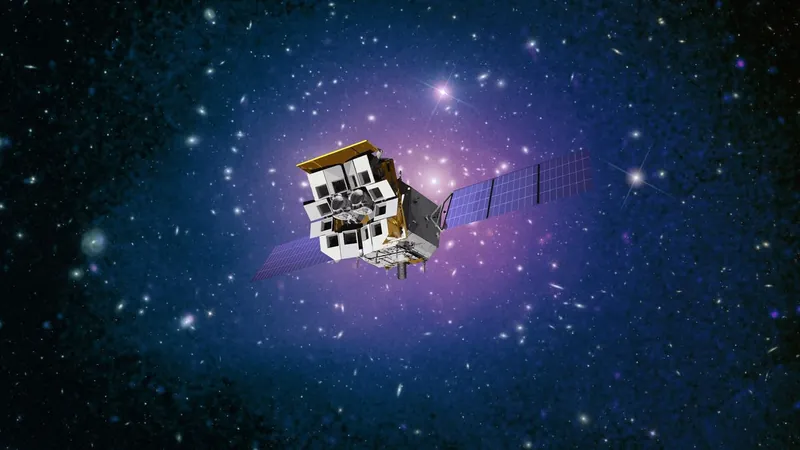
China’s Quantum Leap in Astronomy: The Einstein Probe Unleashes Its 'Lobster Vision'
2024-11-05
Author: Li
Introduction
The groundbreaking Chinese X-ray telescope, known as the Einstein Probe, has already made remarkable strides during its commissioning phase, sparking excitement in the astronomical community. Launched on January 9 aboard the Long March 2C rocket, this innovative spacecraft employs a unique lobster-eye optic system, enabling it to capture stunning details of transient celestial phenomena.
Significant Discoveries
According to the Chinese Academy of Sciences (CAS), significant discoveries have emerged as the Einstein Probe conducts tests and calibrations in its orbit around Earth. As of October 31, the mission has identified various types of transient events, which are brief occurrences where astronomical objects, like stars or black holes, experience sudden shifts in brightness.
Capabilities and Achievements
In an astounding showcase of its capabilities, the Einstein Probe has carried out numerous space surveys and successfully documented a variety of transient celestial objects—ranging from stars, white dwarfs, neutron stars, and black holes, to gamma-ray bursts and supernovae. Yuan Weimin, the mission's principal investigator at the National Astronomical Observatories of China (NAOC), revealed that they have uncovered approximately 60 strong celestial transient events, identified around 1,000 additional potential transients, and noted nearly 500 stellar flares during this period.
Groundbreaking Achievements
One of the most groundbreaking achievements highlighted by Yuan was the detection of an extraordinary gamma-ray burst originating from the early universe. "We observed a radiation burst lasting nearly 1,000 seconds. In comparison, other satellites only captured a 50-second burst," he explained. This enhanced sensitivity equips the Einstein Probe to yield observational data that previous satellites couldn't capture, unlocking secrets of astronomical events from the far reaches of the universe.
Potential New Class of Transients
Moreover, the probe has identified a potentially new class of transients. On April 8, it recorded event EP240408a, which featured an unusual X-ray flare that extinguished after about 10 days. International researchers speculate that this phenomenon might represent the disruption of a white dwarf by a black hole or possibly mark the discovery of an entirely new category of celestial transients.
Cultural Significance
In a nod to its rich heritage, the Einstein Probe has been bestowed with the name "Tianguan," referencing the significant observations made by Chinese astronomers of the supernova SN1054 in 1054, which is famously associated with the Crab Nebula.
Future Prospects
As the mission continues, the Einstein Probe is set to operate for an initial period of three years with potential extensions, promising to further revolutionize our understanding of the cosmos and shed light on phenomena that have long intrigued astronomers.
Conclusion
Stay tuned for more revelations from this extraordinary mission—who knows what mysteries the universe will unveil next!



 Brasil (PT)
Brasil (PT)
 Canada (EN)
Canada (EN)
 Chile (ES)
Chile (ES)
 España (ES)
España (ES)
 France (FR)
France (FR)
 Hong Kong (EN)
Hong Kong (EN)
 Italia (IT)
Italia (IT)
 日本 (JA)
日本 (JA)
 Magyarország (HU)
Magyarország (HU)
 Norge (NO)
Norge (NO)
 Polska (PL)
Polska (PL)
 Schweiz (DE)
Schweiz (DE)
 Singapore (EN)
Singapore (EN)
 Sverige (SV)
Sverige (SV)
 Suomi (FI)
Suomi (FI)
 Türkiye (TR)
Türkiye (TR)